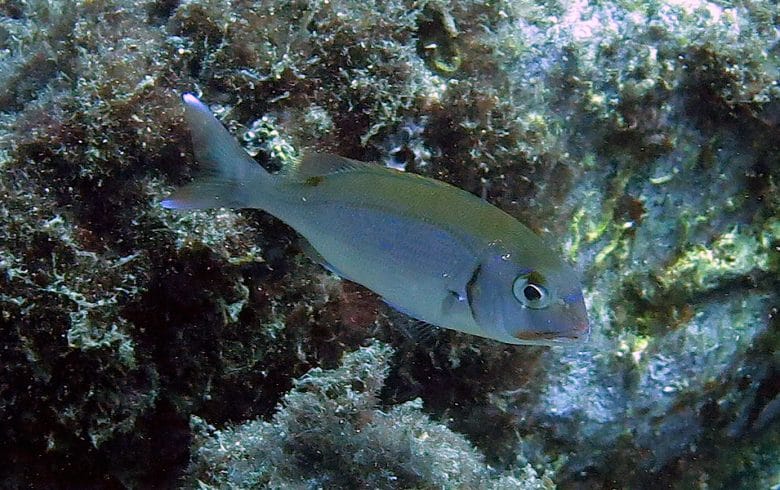
It has an oblong body and a convex head with a slight bulge near the eyes. It has a silvery pink back and a darker head with small blue spots, especially on young individuals. It has dark marks at the base of its pectoral fins and a caudal fin with white tips. Common seabream are carnivorous. They eat crustaceans, molluscs and fish and can grow to 75cm long. They live on rocky and sandy bottoms down to depths of 250m. The juveniles are mainly found in Posidonia seagrass. They occur all over the Mediterranean except in the Black Sea, and from the Bay of Biscay to Mauritania in the Atlantic.
Phylum: Vertebrates
Class: Osteichthyes
Order: Perciformes
Family: Sparidae
Scientific name: Pagrus pagrus
French: Pagre commun
Spanish: Pargo
Italian: Pagro dentice
German: Sackbrasse






















